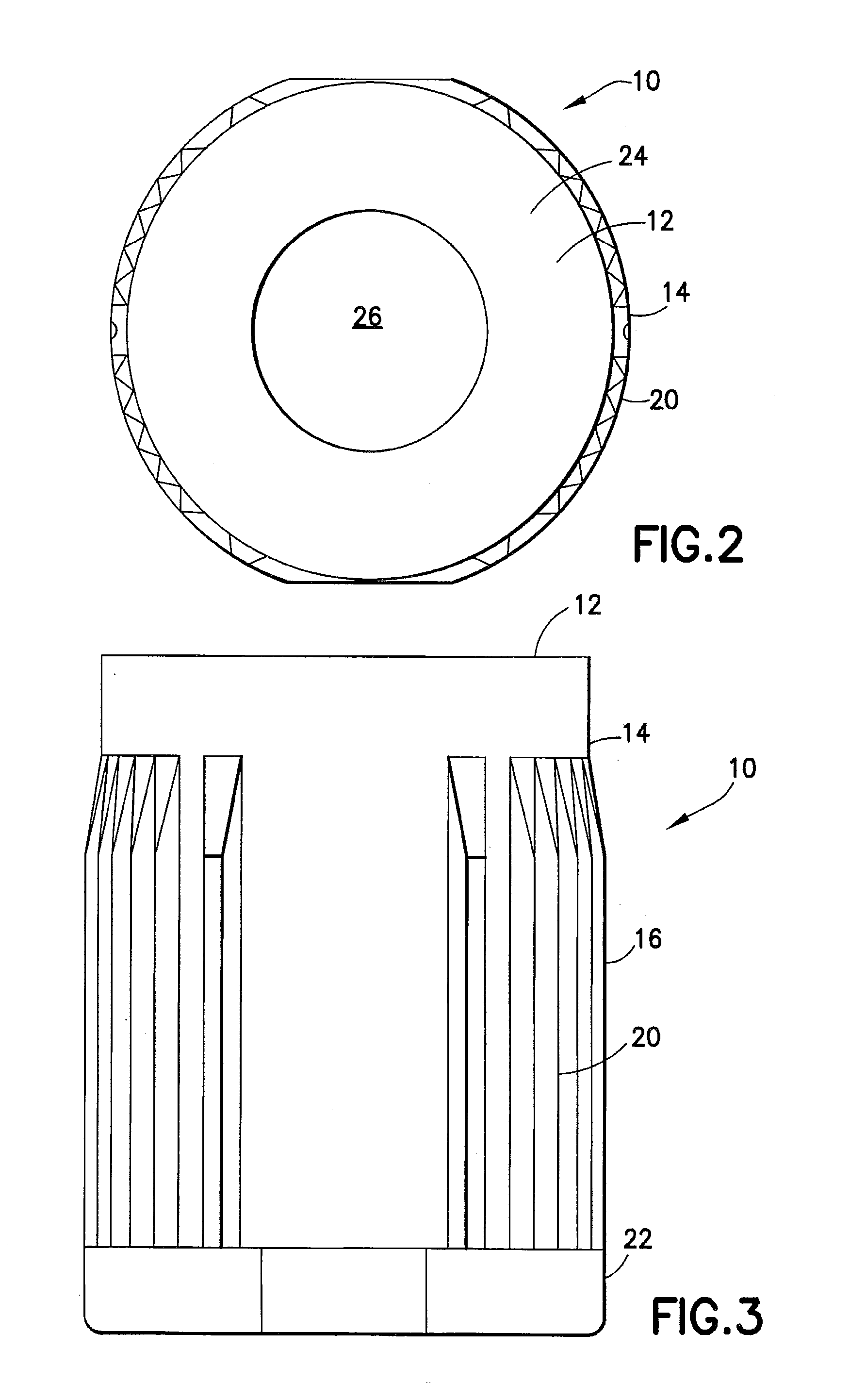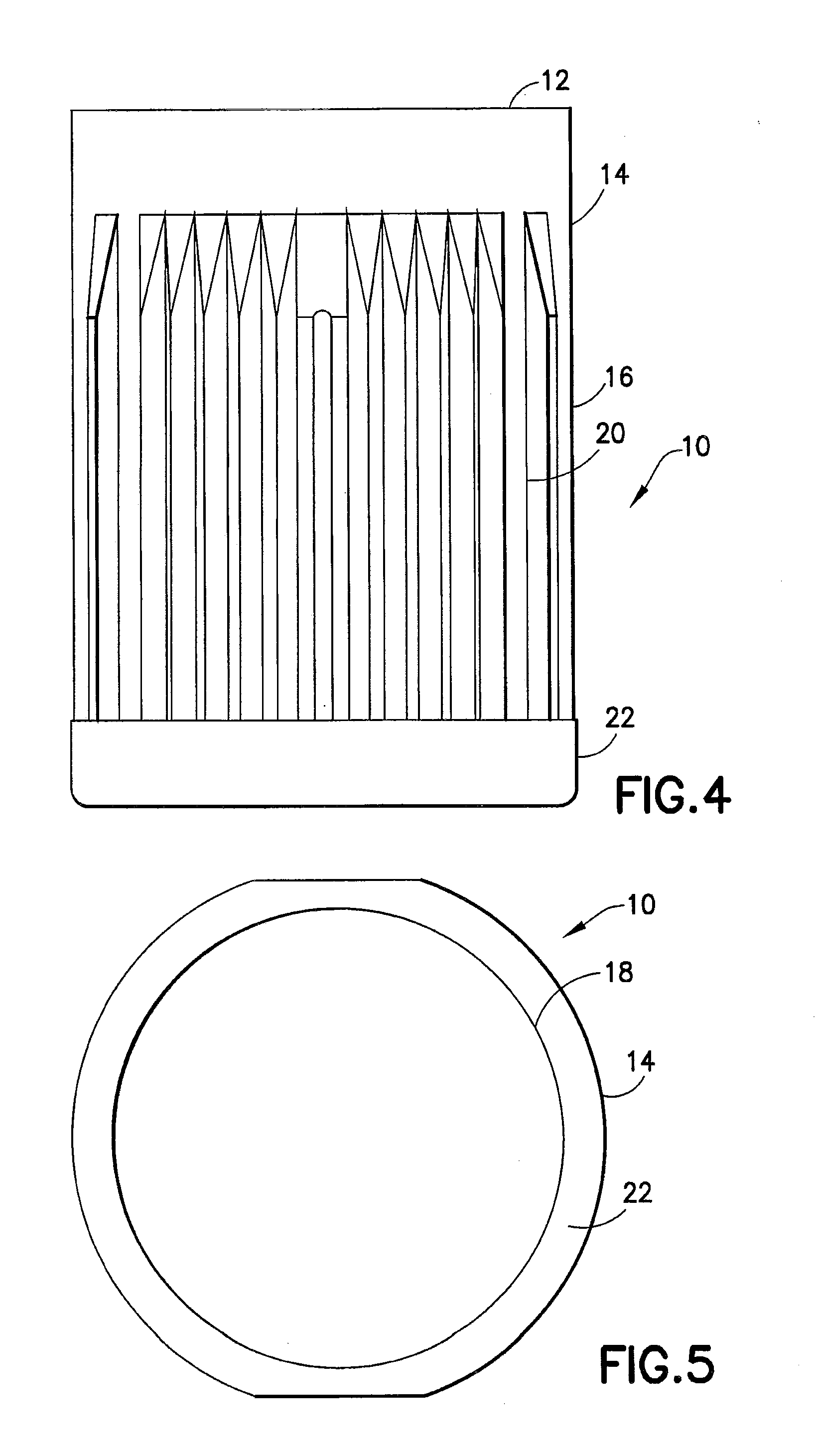Container Assembly and System for Detection Thereof
a technology for collecting containers and containers, applied in laboratory glassware, material excitation analysis, vaccination/ovulation diagnostics, etc., can solve the problems of difficulty in distinguishing one color coded cap from another, difficulty in automatic decapping of blood collection tubes, etc., to facilitate automated processing of biological samples
- Summary
- Abstract
- Description
- Claims
- Application Information
AI Technical Summary
Benefits of technology
Problems solved by technology
Method used
Image
Examples
Embodiment Construction
[0099]For purposes of the description hereinafter, spatial orientation terms, if used, shall relate to the referenced embodiment, as it is oriented in the accompanying drawing figures or otherwise described in the following detailed description. However, it is to be understood that the embodiments described hereinafter may assume many alternative variations and embodiments. It is also to be understood that the specific devices illustrated in the accompanying drawing figures and described herein are simply exemplary and should not be considered as limiting.
[0100]Referring to FIGS. 1-5, the present invention is directed to a cap or closure 10 having a top surface 12 and an annular skirt 14 depending therefrom in which the annular skirt 14 includes a first portion 30 having a first visual identifier, and a second portion 32 having a second visual identifier, as shown in FIGS. 16-57, with the second visual identifier being different from the first visual identifier. Referring to FIGS. 1...
PUM
 Login to View More
Login to View More Abstract
Description
Claims
Application Information
 Login to View More
Login to View More - R&D
- Intellectual Property
- Life Sciences
- Materials
- Tech Scout
- Unparalleled Data Quality
- Higher Quality Content
- 60% Fewer Hallucinations
Browse by: Latest US Patents, China's latest patents, Technical Efficacy Thesaurus, Application Domain, Technology Topic, Popular Technical Reports.
© 2025 PatSnap. All rights reserved.Legal|Privacy policy|Modern Slavery Act Transparency Statement|Sitemap|About US| Contact US: help@patsnap.com



